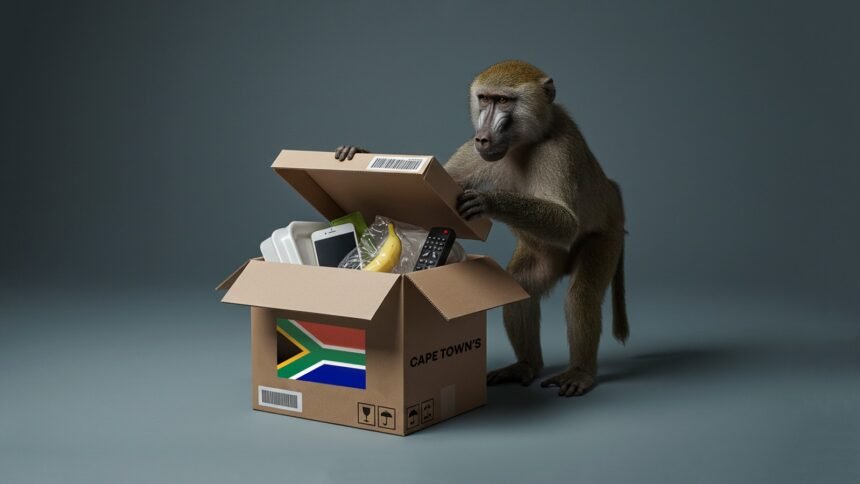Cape Town is famous for many things — Table Mountain, vineyards, surfing — but recently, it’s earned a more bizarre claim to fame: baboons that break into homes, raid fridges, and outwit the best of human deterrents. For the residents of the posh suburb of Constantia, the battle lines between man and monkey are officially drawn.
It started subtly. A rogue troop, known by authorities as CT2, began making appearances at the edge of the city’s leafy southern suburbs. With vineyards on one side and fynbos-covered mountains on the other, the baboons had ample space to forage. But the allure of suburban spoils — fresh fruit bowls, leftovers, even wine — proved irresistible.
Residents say the encounters are no longer rare. “We’ve got baboons checking out our security cameras and testing windows. Last week, one opened the fridge,” says a frustrated homeowner. Armed with intelligence — and apparently a knack for trial-and-error — the CT2 troop has adapted to urban life with an unnerving speed.
Cape Town’s municipal authorities are now locked in a heated debate: how to manage this growing threat. Relocation, sterilisation, electric fencing, dart guns — all options are on the table. One proposal, whispered but real, even involves euthanasia of “problem animals”, drawing fierce backlash from animal rights groups and conservationists.
“They’re not pests. They’re wild animals pushed into human spaces by urban expansion and habitat loss,” argues Lesley Jacobs, a conservation biologist. “Every new housing development chips away at the baboons’ range. What did we expect them to do — sit quietly in shrinking forests while we pave over their homes?”
But for others, especially those dealing with weekly invasions, compassion has its limits. The Constantia Property Owners Association has formally petitioned the city for decisive action. “It’s a safety issue. Some of these animals are aggressive. Children and pets are at risk,” says the group’s chairman.
One particularly infamous baboon, nicknamed ‘General Mango’, has become a local legend — or nightmare, depending on whom you ask. Video footage shows him casually strolling into kitchens, lifting Tupperware lids, and making off with entire roast chickens. Local schools have had to adjust break times to avoid baboon encounters.
The city’s Baboon Management Task Team — yes, that’s a real thing — was created in response to the outcry. Its challenge? Finding a balance between animal welfare and public safety in a city where urban and wild boundaries blur every day.
The science is complicated. Chacma baboons are highly intelligent and live in tight-knit troops governed by alpha males. Break up a troop, and you risk social chaos, splinter groups, and more unpredictable behavior. Trapping and relocating them, as some have suggested, rarely works in the long term and often results in the animals returning or dying in unfamiliar territory.
Meanwhile, Cape Town’s tourism board is understandably nervous. Tourists used to come for wine-tasting; now they’re asking about ‘baboon safaris’. “Some guests find it charming. Others cancel their bookings when they hear about it,” said one local guesthouse manager.
Social media has turned the baboon invasion into meme-fodder. One viral video shows a baboon carefully peeling a banana taken from a handbag at a vineyard wedding. The comments range from laughter to disbelief: “Only in Cape Town could your cake be stolen by a baboon wearing a party hat.”
Yet behind the humor lies a serious issue — a warning, perhaps, about the limits of human expansion and the consequences of ecological displacement. If Cape Town, a city long touted for its green credentials and biodiversity, can’t find a humane solution, what hope is there for other urban centres bordering wilderness?
As for CT2, they seem unfazed. Spotted yesterday perched on a Constantia rooftop, General Mango surveyed his suburban kingdom with all the confidence of a general who knows the terrain — and the fridge schedule — better than his enemies.
One resident summed it up best: “We tried dogs, alarms, even shouting at them in Xhosa. Nothing works. We might as well install a baboon-sized door and call it coexistence.”










